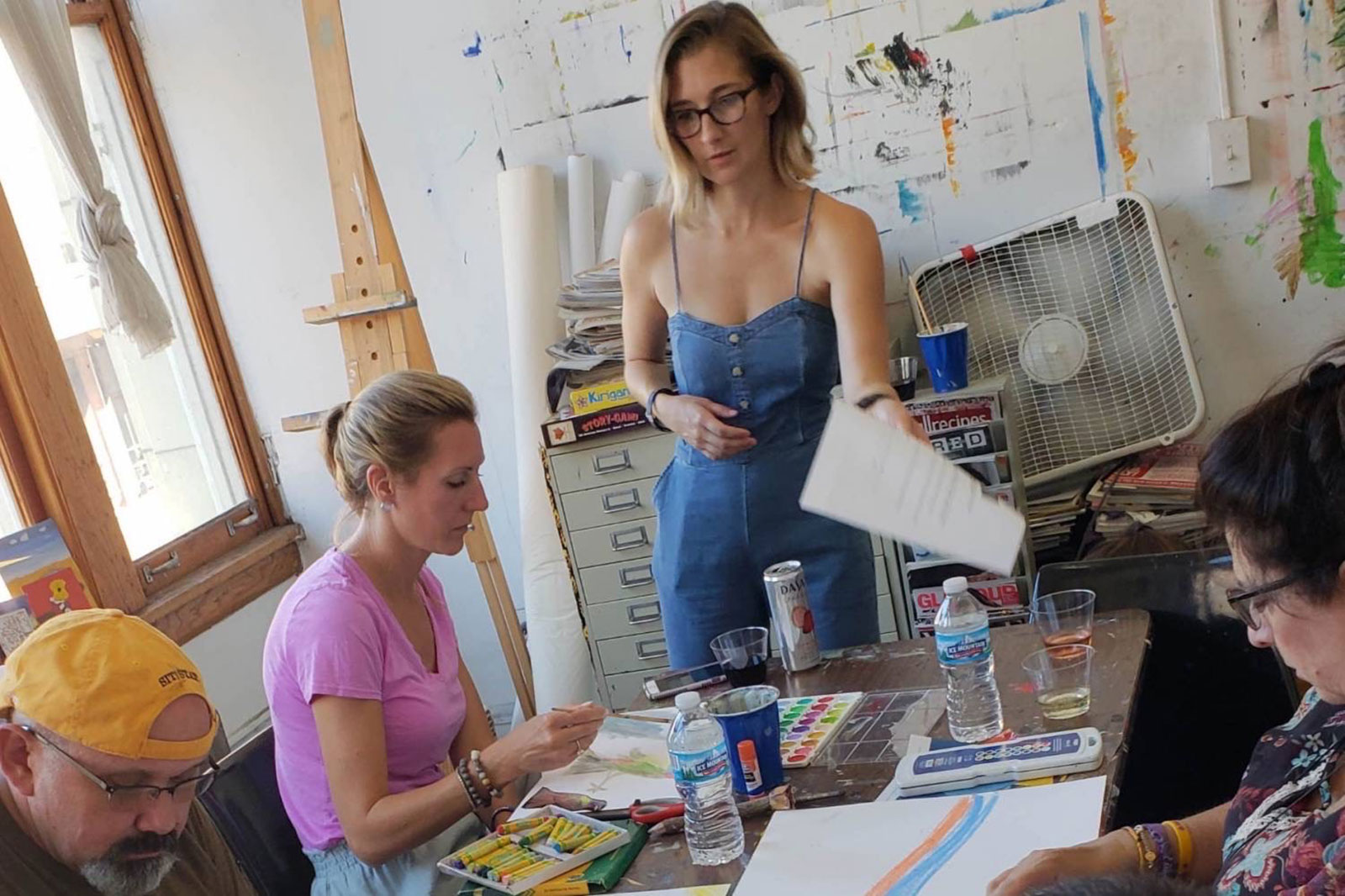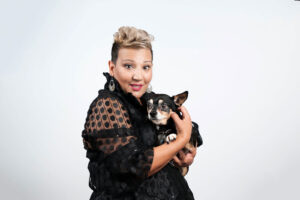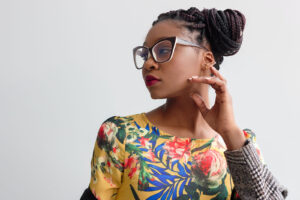Facing cancer is never easy, and many emotions may arise after a diagnosis—from fear to anger to sadness. For some warriors, the emotions are indescribable and they may feel overwhelmed by the rapid changes of their life. In these heavy moments, art therapy can serve as a welcomed respite. While the field is relatively new, the potential benefits of art therapy can be invaluable when it comes to coping with a cancer diagnosis or seeking methods of healing and personal expression.
Art therapy combines the areas of art and psychology. It was first established by British artist Adrian Hill in the 1940s when he worked with recovering tuberculosis patients and discovered the immense benefits drawing and painting brought them. Today, art therapy includes many other mediums from collaging to sculpting to crocheting.
Jacqueline Carmody is a licensed clinical professional counselor (LCPC) who is also a board-certified registered art therapist and a board member at creative arts nonprofit Twist Out Cancer. She defines art therapy as “an alternative communication method through creating images instead of using verbal language.” Therapy can take place individually or in a group and has three different approaches: analytic, psychotherapy or self-care.
Analytical art therapy and psychotherapy both involve using art to explore different symptoms of diagnoses and explore varying traumas, symbolism and experiences. Both approaches use the artwork created or viewed as a conversation between therapist and client to interpret deeper meaning of present emotions.
Using art therapy as self-care, on the other hand, simply encourages an individual’s engagement in art, whether creating or viewing, in an effort for them to gain insight and the ability to communicate what it is they are feeling. This approach hopes to alleviate stress, confusion, anxiety or any other burdensome emotions for the participant. “I think in everyday life we are expected to communicate very efficiently and filtered,” Carmody says. “It can be very exhausting, and art therapy allows the individual to be present and sit across from their feelings instead of holding on.”
A 2018 study published in the academic journal Frontiers in Psychology concluded that “art therapy emerges strongly as a way to enhance […] quality of life and […] ability to cope with a variety of psychological symptoms” in the cancer population. More specifically, a study published in the medical journal Complementary Therapies in Medicine in 2016 discovered that individuals going through chemotherapy who took a watercolor painting class while in the day unit had an improved quality of life factor and lower rates of depression. “Oftentimes someone who has cancer may have low energy, but watercolor painting is a simplistic motion that creates something fluid, energizing and beautiful,” Carmody says.
While a more common type of counseling such as talk therapy can be impactful for someone touched by cancer, art therapy presents effective supplemental coping and healing mechanisms in its own right. When a cancer warrior finds it difficult to express what they feel verbally, artwork can be a productive means of communication—and it often echoes the experience of receiving a diagnosis.
When a cancer warrior finds it difficult to express what they feel verbally, artwork can be a productive means of communication—and it often echoes the experience of receiving a diagnosis.
“I think individuals who have heard the words ‘you have cancer’ have experienced a loss of control on such a level that many of us don’t understand […] all their next steps are now dictated by medical professionals or in the best interest of their health,” says Carmody. “They have to acquire this radical acceptance of not knowing what’s next, which is very much parallel to art making.”
An artist starts with a blank canvas and confronts the feeling of the unknown. Through the use of applying and manipulating materials, Carmody explains, an individual can process those feelings of losing control and apply them to the artwork. This not only helps the participant regain a feeling of authority, but it hopefully also incites a conversation, all while making something personal and beautiful.
Participants can find a sense of community and camaraderie in addition to coping and healing strategies. Carmody pioneered Twist Out Cancer’s Twistshops, free art therapy-focused workshops promoting healing, relaxation and emotional recovery in order to reduce symptoms of depression, anxiety and stress related to cancer. The workshops emphasize emotional connection among participants in an effort to decrease feelings of isolation that can accompany a cancer diagnosis.
Carmody runs a weekly virtual Twistshop on Tuesdays with art projects ranging from junk journaling––a combination of journaling and scrapbooking that uses found and recycled materials–to charcoal drawing, and she says the bonding that happens among the group is obvious. “Everyone lets down their guard, sharing unfiltered narratives with peers while getting vulnerable about art they’re making at the same time and receiving encouragement. It’s so cool to witness that level of support,” she says.
Most importantly, Carmody wants to stress the accessibility of art therapy. Art can be intimidating to people without a background in it or those who don’t view themselves as being artistically inclined, but Carmody and other art therapists work to make comfort the focal point in sessions. For Twistshops, Carmody and other facilitators will send out surveys to participants ahead of time to ensure certain materials aren’t an irritant or allergen. Once that information is collected, Carmody likes to offer a wide variety of approved materials for someone to choose from, especially if they are a beginner, in order to invite playfulness. Watercolor and collage are her favorites as both mediums are accessible in a studio and at home, and neither require high energy or a particular skill set. These familiar materials help individuals get past any insecurities and find a comfort item for expression.
Art therapy can be an excellent means of communicating and coping for cancer warriors. If interested in beginning individual or group art therapy, look for a registered board-certified art therapist in your area. Art therapists should have a master’s degree in art therapy or counseling and offer a variety in artmaking methods to choose from. Sessions can be in group or individual settings, either face to face or virtual, and length will vary. And remember – you don’t have to be an artist to benefit from art.







